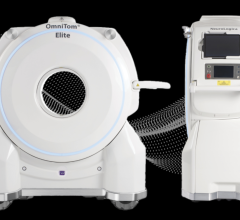December 13, 2011 – According to a new study, molecular breast imaging (MBI), can provide critical information in the initial diagnostic workup and surgical planning for patients with newly diagnosed breast cancer. Adding MBI to conventional imaging, namely mammography and ultrasound, enhances pre-surgical planning.
In a retrospective review of records at Scripps Clinic (San Diego, Calif.), MBI confirmed, clarified or added to findings of conventional imaging in 75 percent of patients. MBI identified an additional lesion or significantly changed management in 20 percent of cases. MBI was unhelpful or led to an additional nine biopsies or work-up in 25 percent of patients. The study concludes that MBI was found to be cost-effective, well-tolerated and was a reasonably sensitive and specific adjunct modality for enhancing pre-surgical planning for patients with newly diagnosed breast cancer, especially in relatively young female patients with dense breast tissue. For this study MBI was conducted with a high-resolution gamma camera, the Dilon 6800.
"Based on our review of our first year's experience with breast cancer patients who had BSGI prior to undergoing cancer treatment surgery, we have a better understanding of the modality's strengths and limitations," said Marie Tartar, M.D., of Scripps Health.
"Like all breast imaging modalities, MBI will not identify all cancers. However, we have found in selected patients needing further evaluation for persistent questions after conventional breast imaging work-up (mammogram and/or ultrasound), MBI can be useful and may be the first modality to indicate the presence of a breast cancer. Based on our results, MBI seems to be an acceptable alternative to pre-operative local staging of breast cancer, if additional imaging beyond mammography and ultrasound is indicated, and a patient cannot or prefers not to undergo MRI [magnetic resonance imaging]," said Tartar.
As a follow-up to mammography, MBI utilizes the Dilon 6800 gamma camera to help physicians more clearly differentiate benign from malignant tissue. To perform MBI, the patient receives a pharmaceutical tracing agent that is absorbed by all the cells in the body. Due to their increased rate of metabolic activity, cancerous cells in the breast absorb a greater amount of the tracing agent than normal healthy cells and generally appear as dark spots on the MBI image.
For more information: www.dilon.com


 July 30, 2024
July 30, 2024 








